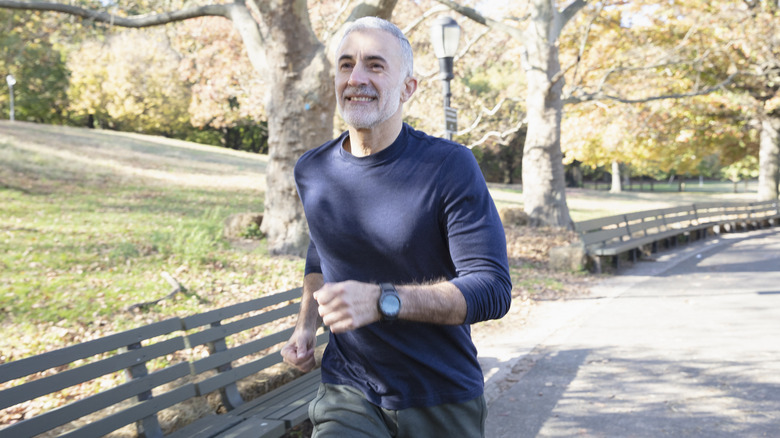Signs You're Suffering From Exercise Intolerance
If you've ever wondered why routine activities seem extraordinarily hard, leaving you gasping for breath or feeling wiped out, you might be facing more than a simple lack of stamina. You could be dealing with what's known as "exercise intolerance."
Exercise intolerance is a condition characterized by an inability to engage in physical activity at the level or intensity that would generally be considered normal for one's age. It isn't just about feeling a bit out of shape or struggling with a tough workout; it's when normal physical activities trigger abnormal responses that can be very uncomfortable and last long after your workout is over. Exercise intolerance isn't limited to those new to fitness, and even seasoned athletes can experience it. The causes can range from lifestyle factors to underlying medical conditions, like heart or lung disease, and it's important to seek out professional medical care.
The main signs you might be suffering from exercise intolerance include extreme fatigue, breathlessness, or pain — suggesting that your body is not adapting to exercise the way it should. We'll discuss these symptoms in more detail and then talk more about how you can get help.
You are short of breath when you shouldn't be
Shortness of breath with exercise intolerance isn't just the usual breathlessness that anyone might experience after a strenuous run. This is a disproportionate and distressing difficulty in breathing that occurs even with mild exertion, perhaps walking at a moderate pace or climbing a flight of stairs.
Several specific issues could be at play here. For instance, in cases of anemia, the body lacks enough healthy red blood cells to carry adequate oxygen to the tissues, leading to breathlessness, according to a 2019 study in Scientific Reports. Asthma can cause the airways to narrow and produce extra mucus, making breathing difficult during exercise (via The Lundquist Institute). Cardiovascular conditions, such as heart failure or valve disorders, can compromise the heart's ability to pump blood to the lungs effectively, leading to shortness of breath during physical activity (via Breathing NYC). Pulmonary issues, like chronic obstructive pulmonary disease (COPD) or pulmonary hypertension, directly impact the lungs' efficiency, making the act of breathing during exercise more laborious.
Ignoring this specific symptom is risky. Consistent, abnormal shortness of breath is a red flag and warrants medical attention. Keep a detailed account of incidents, noting the intensity and duration of exercise, and any additional symptoms. Sharing this information with your healthcare provider can help you get an accurate diagnosis and tailored intervention.
You feel exhausted during and after a workout
The fatigue associated with exercise intolerance is more than just feeling tired after a workout; it's a profound lack of energy that doesn't seem to fit the amount and intensity of exercise you've done. It's the kind of fatigue that can make doing a light jog or perhaps a brisk walk feel as if you've just completed a marathon. And it's not just physical; it can also manifest as mental tiredness, making tasks like decision-making or concentrating significantly more challenging post-exercise.
Several factors can contribute to this experience of fatigue. According to a 2010 review published in Current Neurology and Neuroscience Reports, there could be metabolic issues inhibiting your body from properly converting nutrients to energy. Heart conditions might limit the oxygen supply to muscles, or respiratory issues could hamper effective oxygen intake, per a 2015 article in Circulation: Heart Failure. Lung conditions like asthma or COPD can constrict airways or reduce lung capacity (via UpToDate). Additionally, conditions like chronic fatigue syndrome or fibromyalgia are notorious for causing extreme tiredness.
If you consistently feel unusually drained after moderate or even mild physical activity, it's essential to take note. Your body is trying to communicate that it isn't coping as it should. While everyone has off days or occasional bouts of tiredness, if it's a recurrent theme every time you exercise, it's time to seek advice from a healthcare professional. Addressing the underlying cause of this fatigue is not just about improving stamina, it's about treating the underlying condition that's causing it.
You have muscle pain, weakness, and cramping
At the cellular level, muscles rely on efficient energy production for contraction and function. With exercise intolerance, there can be a problem with the metabolic pathways, specifically in the mitochondria, which are the energy powerhouses of the cell. This can result in decreased ATP production, the primary energy currency for muscle contraction. The outcome? Muscle weakness and premature fatigue even with minimal exertion.
Lactic acid build-up is another concern. During strenuous exercise, lactic acid accumulates in the muscles, leading to the familiar sensation of muscle burn. However, in individuals with exercise intolerance, this accumulation can occur much more rapidly and at lower intensities of activity, causing pain and cramping far earlier than it would in a healthy individual, per a 2012 study in Neuromuscular Disorders.
Furthermore, muscle recovery post-exercise is often compromised. Inefficient removal of metabolic waste products and reduced blood flow can prolong muscle soreness and delay the healing process (via Physio.co.uk). This persistent muscle discomfort is not just the typical post-workout ache but an extended period of pain and sensitivity.
Lastly, the chronic nature of these muscular effects can lead to muscle atrophy over time. The combination of reduced activity due to pain and fatigue, along with potential metabolic deficiencies, can result in muscle wasting, further exacerbating weakness and reducing endurance, per a 1992 study in Circulation.
Causes and risk factors
Heart conditions, especially chronic heart failure, are a common cause of exercise intolerance. The heart's reduced ability to circulate blood results in diminished exercise tolerance.
Respiratory problems are another common contributor to exercise intolerance. Conditions such as asthma, lung cancer, and COPD can restrict breathing, making physical activity overly strenuous. The inability to take in adequate oxygen results in symptoms like shortness of breath, lightheadedness, and dizziness during exercise (via Markham Integrative Medicine).
Long-hauler syndrome, also known as "long COVID," is another notable cause. This post-viral syndrome can lead to a range of physical challenges, including fatigue, body aches, and persistent respiratory difficulties. The lasting effects of COVID-19 can also contribute to cardiocirculatory and pulmonary issues.
Mast cell activation syndrome (MCAS) has also been linked to exercise intolerance. Cardiovascular activities can elevate histamine levels in people with MCAS. This might increase allergy symptoms and inflammation, acting as a barrier to consistent exercise.
Chronic fatigue syndrome (CFS) poses significant challenges as well. It is characterized by a persistent lack of energy and those who have it find both daily tasks and physical activity increasingly taxing. Some medical professionals believe there's a connection between post-viral syndromes and the exercise intolerance observed in CFS sufferers.
Individuals with diabetes, especially type 2 diabetes, can also experience exercise intolerance because diabetes affects how the body uses glucose for energy. It can also cause circulation issues due to impaired blood vessels, impacting the ability to exercise.
Metabolic myopathies, genetic disorders affecting energy usage, can also be limiting. These conditions can lead to muscle breakdown during exercise.
Finally, motor neuron diseases, including ALS and MS, disrupt nerve-to-muscle communication. This can cause fatigue and muscle weakness.
How it's diagnosed
If you suspect that exercise intolerance is what you're dealing with, don't throw in the towel and head for the couch. Talk to your doctor about ways to treat the cause of your exercise intolerance so you can enjoy physical activity again and reach your health goals. Your doctor will be able to provide an accurate diagnosis — or refer you to a specialist for a diagnosis — and then develop a treatment plan.
There are various tests doctors use to detect exercise intolerance. One of these is a cardiopulmonary exercise test (CPET), also known as VO2 testing. This examines how much oxygen your body uses during exercise, which correlates with fitness level. Another is the cardiac stress test, which involves an electrocardiogram (ECG). This test observes how the heart behaves when pushed to work hard. For a deeper look at the heart, a nuclear stress test, which examines how your blood travels to your heart during exercise, might also be conducted (via the Mayo Clinic).
There are also different imaging tests that doctors might use. These could include ultrasounds, positron emission tomography (PET) scans, single-photon emission computed tomography (SPECT) scans, and myocardial perfusion imaging. These tests create pictures of the heart and other areas, helping doctors understand any abnormalities or issues.
In addition to these, doctors might take blood samples or do other tests. The goal is to identify the specific reasons you struggle with exercise. Diagnosing exercise intolerance may require a mix of tests to get a full picture of what's going on in the body.
Treatment for exercise intolerance
Treatment for exercise intolerance is primarily a matter of treating the underlying condition causing it. This may be through a combination of medication, lifestyle changes, and other forms of treatment. Be sure to follow all of your doctor's recommendations. Unless your doctor advises it, you don't need to stop exercising. Regular exercise improves overall health and can help improve many conditions that cause exercise intolerance, such as heart failure, per a 2003 review in Circulation.
There are changes you can make to your exercise program that will make physical activity more enjoyable. First and foremost, don't overexert yourself. Pace yourself, starting with a gentle warm-up and gradually increasing the intensity. Listen to your body and be sure to reduce intensity or stop before uncomfortable symptoms arise. Taking frequent rest breaks will also help you stay within your body's limits. Stop and take deep breaths and drink some water. When you are ready, start again.
If you feel concerned about working out on your own, you can seek out a physical therapist who can guide your workouts. They can help you know what your body's limits are and help you develop awareness so that you can exercise without going past those limits. Lastly, keep a journal, and note what you did and how you felt in each workout. This can help you and your doctor track your progress and pinpoint specific activities that work or don't work for you.







